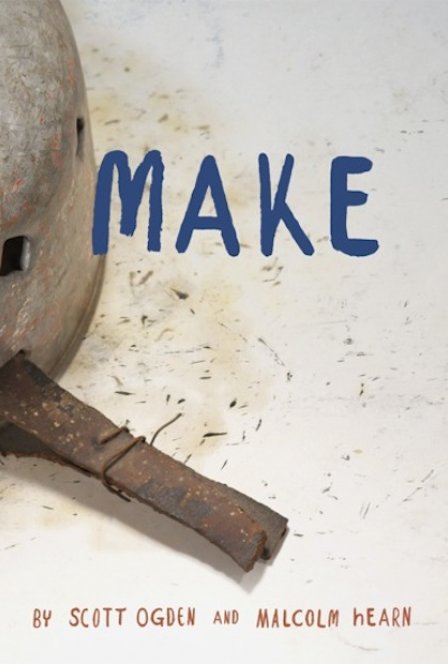Most people familiar with Make will be so primarily because of its promotion by Sufjan Stevens, who drew a great deal of inspiration from the artists featured in the film while recording The Age of Adz. Stevens was so deeply touched by the passion, intensity, and obsession of this documentary’s subjects that he felt compelled to distribute the film through his Asthmatic Kitty label. The film — directorial debut of both Malcolm Hearn and Scott Ogden — examines the art and lives of four deeply impaired and emotionally troubled people, completely self-taught and, as much as they are able, fiercely independent. Rather than using their film as an opportunity to impugn the way our society treats its afflicted citizens, Hearn and Ogden approach the outsider artists as sui generis creators, individuals who, far from being mere products of their adverse circumstances and physical/mental ailments, transcend them as best they can in order to make totally fascinating works of art. The four artists profiled in Make all suffer from pretty severe physical and mental disabilities, some more severe than others and some better cared for by the State than others.
Judith Scott, born with Down Syndrome in the 1940s, was institutionalized for most of her life and so ill-treated during her years as a ward of the State that health professionals didn’t realize she was deaf until she was well into her 40s. After being legally adopted by her long-estranged twin sister and moving to San Francisco, Judith started making intricate, multi-faceted wrapped textile pieces during her adult care center’s arts and crafts periods. The pieces offer as much a window into the interior life of someone who can’t hear and can hardly communicate as you’d imagine. Upon viewing the progression of her pieces, all of which have been photo-archived by her caregivers, a pattern of meaningful communication emerges, each piece a conduit, revealing her desire for community and those concepts that escape her non-verbal attempts at conversation. Seeing the furtive smiles that race across her otherwise tortured face when she’s in the act of creating is something of a revelation.
Hawkins Bolden, nearly 100 years old when the filmmakers visited his small home in Memphis, had been blind since he was a child. His chosen art form is a constant and constantly evolving stream of otherworldly scarecrows made from garbage (mostly metal) he finds strewn throughout his neighborhood. The practical reason for his obsessive scarecrow building is his desire to keep the area birds from destroying his small urban vegetable garden, but according to a couple of artists that Hearn and Ogden interviewed in the area, the creations speak quite a bit to Bolden’s character; nearly every one of his creations has an unsettling number of hollow eyes. While the metaphor is rather easy, the pieces he creates and the way in which he reluctantly speaks about his art are remarkable, and it is a credit to the directors that they refuse to engage in the kind of exploitation that Bolden’s story could so easily turn into.
Easily the most fascinating and troubling outsider artist in Make is Prophet Royal Robertson. A sign-maker by trade, Robertson plastered his trailer in Baldwin, LA with violent, disturbing and tragicomically misspelled tirades against his ex-wife and the evils of the modern world — specifically, lawyers and gamblers. A man totally consumed by his work, so thoroughly imbued with all manner of conspiracy theories, Robertson considers himself an heir to Ezekiel and gleefully acts the part of a prophet crying out in the wilderness against whorish women and conning lawyers. He’s also firmly convinced that aliens visit his home on a semi-regular basis, and at some point they’ll take him away. His psychosis is so tangible in his interviews it’s gut-wrenching to witness the inevitable happen over the course of time that the filmmakers kept track of him. Robertson is troubling because he’s the only artist in this film that seems like he’s playing an involuntary role in his artistic endeavors. When he explains that God is sending him visions to paint and write, one assumes that’s the only way he can make sense of his compulsion.
By the time that Hearn and Ogden made their final cut, only one artist profiled was still alive, and by focusing on Ike Morgan last, the directors chose to go out on a genuinely uplifting note. An inmate/patient at the Austin State Mental Hospital since the age of 17, Ike is finally released on his own recognizance as a middle-aged man after the doctors figure they’ve got his medications right. Morgan, entirely gentle and soft-spoken, worries what might become of him after leaving the hospital and remarks that it’s the work (his art), if anything, that’s going to give his life meaning and keep him relatively healthy. Make comes at a time when theories about art, the handicapped, and social policy abound. It summarily plops itself down in the middle of ideological conversations as if to say: screw your context, go make something sweet while you still have time.

